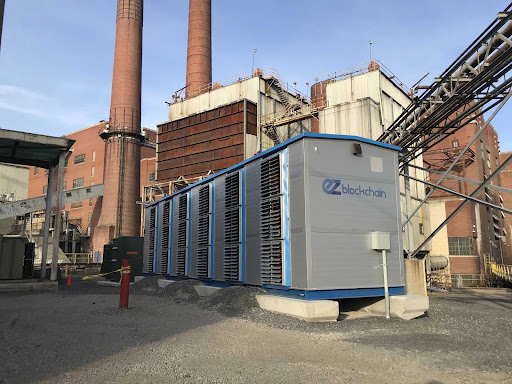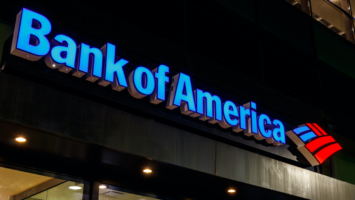Much has been said about Bitcoin‘s carbon emissions. Far less has been said about the potential of blockchain to increase the efficiency of renewables by transparently managing supply and demand. Blockchain doesn‘t pose a threat to the planet — it’s going to play an essential role in helping to bring about a net-zero carbon emission economy.
It is a few years in the future: You are sitting on your sofa, having a nice coffee after loading the washing machine. You’ve switched it on but, of course, the Internet of Things-enabled machine checks prices and will run when it hits a cheap electricity window. The Tesla outside in the drive is fully charged, you don‘t have any plans to go any further than the supermarket today, so the battery is available to sell its energy back to the grid and deposit tokens in your energy wallet if the electricity grid requires power.
Back to today.
Energy and electricity, in particular, are vital to our society. The grim effects on Texas in the 2021 freeze — where more than 4.5 million homes and businesses were left in the icy dark, causing misery and 246 deaths — showed us how vulnerable all our systems are to trouble with the electricity supply.


In 1882, the first U.S. electricity plant, the Pearl Street Station, started producing power for around 85 customers‘ lights in Manhattan, using DC current. Westinghouse, a rival to Thomas Edison’s company, invented AC power and built a big hydropower plant at Niagara Falls to supply electricity to Buffalo, NY. Other developed countries followed suit. The model was a large centralized power plant that, through a grid, sent high voltage electricity to substations and distributed it to residential and business consumers.
This model worked well for more than a century or so. It does, however, rely on large, expensive and centralized power stations fueled by coal, natural gas, hydro or nuclear. It‘s a top-down structure.
Well, DER…
Now we have a new paradigm: In a transition to a decarbonized future, we have lots of Distributed Energy Resources (DERs) to deal with. These could be wind or solar generators, but they could also be battery storage, hydrogen fuel cells, smart appliances or electric vehicles. Utility company Dominion Energy, for example, is investing in a fleet of school buses in Fairfax, Virginia.


Twice a day, they will be picking up and dropping off kids. The rest of the time, they sit in the depot to serve as a giant battery for the local power grid. Instead of a few large power stations, soon, we will have a very complex web of producers and consumers. In the old days, if a national grid needed more power, someone flicked a switch and another power plant came online. Conversely, if there was too much, an engineer somewhere shut one down.
Balancing all the loads from different inputs and outputs is much more difficult in a distributed system and requires a lot of AI, data analytics and some sort of transparent, accessible, trusted and un-manipulable accounting system. You might have come across something of this nature. Spoiler: These are blockchain and tokenomics.
The new energy paradigm is a rough beast, slouching to be born, to misquote Irish poet W.B. Yeats. But, we can look at a few pioneers in the field.
Distro – Port of Rotterdam
Rotterdam in the Netherlands is the largest port in the world, handling incredible amounts of cargo every day. It uses a lot of electricity. BlockLab.nl teamed up with S&P Global Commodity Insights, a giant in the field of commodity trading and analytics, to create Distro, an AI-based trading platform to buy and sell energy from a solar power microgrid on the roofs of buildings within the port complex.
It uses high-frequency trading and blockchain accounting to drive down user costs by 11%, produce returns up 14% and reduce emissions of CO2, according to an in-house analysis released October 5, 2021. The success of this pilot project has generated tremendous interest in replicating this in other places, according to James Rilett, senior director of Innovation at S&P Global Commodity Insights.


BlockLab is a multi-disciplinary innovation laboratory that aims to put blockchain technology into practical use by building applications to enhance the global energy transition and optimize global supply chains. It is backed by the Port of Rotterdam and collaborates with leading universities and technology developers.
Janjoost Jullens, energy lead at the BlockLab, met Rilett at an exhibition and there was an immediate exchange of ideas. James Rilett says,
“We were already thinking about AI, blockchain, big data and the energy transition. What we wanted to do is bring the best bits of the proven evolution of energy markets to a new technological paradigm.”
The Port of Rotterdam backed the project in 2018 with a small amount of “pizza money,” with the clear direction that it had to be a practical and realizable project, not some vaporware. Distro is a peer-to-peer energy network of consumers and “prosumers.” That is, users that both generate power and consume it as well. All the energy trading is automated, so there is minimal administration needed.
“It‘s a very innovative and realistic method,” Janjoost says. “We blend together blockchain, algorithm trading, data engineering and data science — a business solution that copes with decentralization.”
Blockchain is the “special sauce,” as James describes it, that ensures that transactions are fair, transparent and reconciled, which is a big issue in the conventional energy trading world.
“The platform has hosted 20 million blockchain-validated, cleared and settled transactions. The blockchain lowers the price at which it is sensible to manage microtransactions because it‘s beautiful technology out of the box that helps those transactions clear in a trustful way. It is unique and new to the power market.”
They are working on scaling this technology to larger projects. The first will be implemented in the Port of Rotterdam industrial area, which accounts for 35% of the Netherlands‘ entire carbon emissions, and the second is a microgrid development in California.
Another niche use is “Shore Power.” Docked ships need variable power, usually using diesel generators, and produce fine dust air pollution. Distro is working on replacing this with clean energy supplied by renewables to overcome this problem.
Powerledger announced as a winner at the World Summit Awards (@WSAoffice) in the Environment and Green Energy category, for our peer-to-peer energy trading project in Uttar Pradesh, India!
Read more here: https://t.co/klyrqu0m5B#wsa2021 #UN #wsa2022 #HackTheGap #UNSDGs pic.twitter.com/aPQulKFeGO
— Powerledger (@PowerLedger_io) February 7, 2022
Ledger of Power
Australia’s Powerledger is pushing forward with decentralized markets so that renewable energy generation, storage and purchasing power are harnessed in an optimal way. It aims to expand the use of renewables by using advanced trading between microgrids to ensure that high penetration levels will not cause grid instability.
Ensuring continuity in transmission and distribution is essential with intermittent renewable energy sources to avoid conventional grid failures, including not only blackouts but brownouts, where the grid falls below its operating parameters and causes problems with equipment.
It has already established almost a dozen projects in Australia and various other countries. Powerledger released the Solana-based token POWR on Coinbase and Binance last year.
Jemma Green, Powerledger executive chairman and co-founder, tells Magazine:
“What happens is that energy companies often bundle fossil fuel energy into the mix to make up for holes in the supply of intermittent renewable energy.”
She believes that storage, including EV batteries and the use of advanced market software, will bridge that gap as more renewables come into the energy mix.
Powerledger‘s uGrid software is being used in Thailand in project T77 to trade rooftop solar power between an international school, apartment complex, shopping center and dental hospital in Bangkok. This blockchain-based software is the backbone of the peer-to-peer trading system that enables energy distribution within the community. This is cheaper than the grid and reduces emissions because the generation is local and not from a distant power station. The key technology is a blockchain app that trades energy between participants rapidly to get the best price in a microsecond-by-microsecond fluctuating market of supply and demand.
Powerledger is working on 30 projects in 11 countries, so these different energy technologies are being put through their paces to validate their performance. Green says:
“People are, understandably, apprehensive about any new technology, but blockchain is the building block for a whole new internet. It’s a whole new era where you can take the sun‘s rays and turn it into a currency.”
There is a lot of potential for these projects across the developing world, perhaps in the way that smartphone banking applications leapfrogged the Western concept of high street banks and went straight to mobile users in Africa and Asia.
Justin Sun not involved
Across Asia, numerous other projects harnessing sustainable energy and blockchain are being implemented. Launched in 2015, The Sun Exchange‘s micro-leasing marketplace in South Africa brings individual and corporate energy investors to off-grid energy development. Tokens are a way to finance a project without going down the route of conventional capital, which not all projects can.
Blockchain can also be valuable for measuring, recording and verifying greenhouse gas emissions. ECO2 Ledger uses blockchain technology to make carbon credit data more reliable and traceable in the voluntary carbon market in China, where individuals can track their carbon emissions on the MyCarbon app and trade with those who need carbon credits. Launched in mid-November 2019, it quickly accumulated over 500,000 users, with its website claiming to have traded 100,000 tons of carbon credit.


Trading in Renewable Energy Certificates (called by various names in different markets) is important. The production, trade, distribution and consumption of renewable energy can be electronically documented and tracked with this method, creating carbon credits for verifiable carbon generation. In the developed world, this is an established and regulated market. In the developing world, where it is often voluntary, there can be a lot of issues: transparency of tracking, fraud and unacceptable transaction costs.
Swiss-based Energy Web Foundation (EWF) is a nonprofit founded in 2017 that is developing publicly available and decentralized solutions designed specifically for the energy sector. EWF’s Energy Web Origin (EW Origin) is a suite of open-source and fully customizable software tools for building blockchain platforms for easy and efficient renewable energy sourcing in line with the existing standards and regulations.
They have projects in Thailand, Turkey and El Salvador. Mercados Eléctricos16 (MERELEC), an electricity trading corporation operating across Mexico and Central America, is executing a pilot platform to assess a business case for the technical feasibility of a blockchain-based regional carbon credit trading marketplace. This is a fledgling project, started in 2019, and it has not been without challenges. Data acquisition has been a problem due to the diversity of devices. Lack of understanding of blockchain has been another. As these credits are voluntary, there seems to have been a lack of customers. But, good projects will overcome early difficulties.


A flare for flares
A lot of natural gas is lost, being flared (burned) instead of being used. It is potentially hazardous and often uneconomic to process and sell. This is very wasteful. EZ Blockchain, founded in the United States in 2017 by Sergii Gerasymovych, uses this waste gas. He explains, “We utilize that energy, convert it into electricity and mine Bitcoin.” The company’s product is a mobile data center that can be put on a gas site and use surplus gas to generate power — a neat trick.
“There is a lot of energy in the power grid that is wasted. If there is excess power in the grid, we use it to mine Bitcoin. If there is a shortage, then our data center shuts down. It‘s balancing supply and demand.”
The company is running flat out and installing new mining data centers every day. It has over 60 operating in the U.S. and Canada, some directly owned by EZ Blockchain, others by the energy companies themselves. They are building around a dozen more each month and are hooking their data centers up to renewable microgrids.
“Our company is focused very much on incentivizing renewable energy,” Sergii says.
“What I mean by that is renewable energy such as wind or solar requires a consistent user of power in order to be profitable. So, with the help of batteries, solar panels or wind turbines and cryptocurrency mining as a constant load, we can provide the companies that invested in renewable assets a much quicker return on investment. It can use the excess energy instead of being shut down when the wind blows, but there is not enough demand.”
He adds:
“The future is bright but there is a lot of work. We are at the stage where we are massively expanding. We literally hired ten people last week. So, the company’s growing exponentially.”
Putting the pieces together
Decentralized energy systems — local and low carbon — are the way forward for energy transmission and distribution. Couple that with IoT, AI, machine learning, big data and other technological innovations, as well as much more granular user control, a decentralized financial and accounting system will be required to ensure transparency, security and accountability. There‘s really only one technology that fits the bill: blockchain.






















Comments (No)